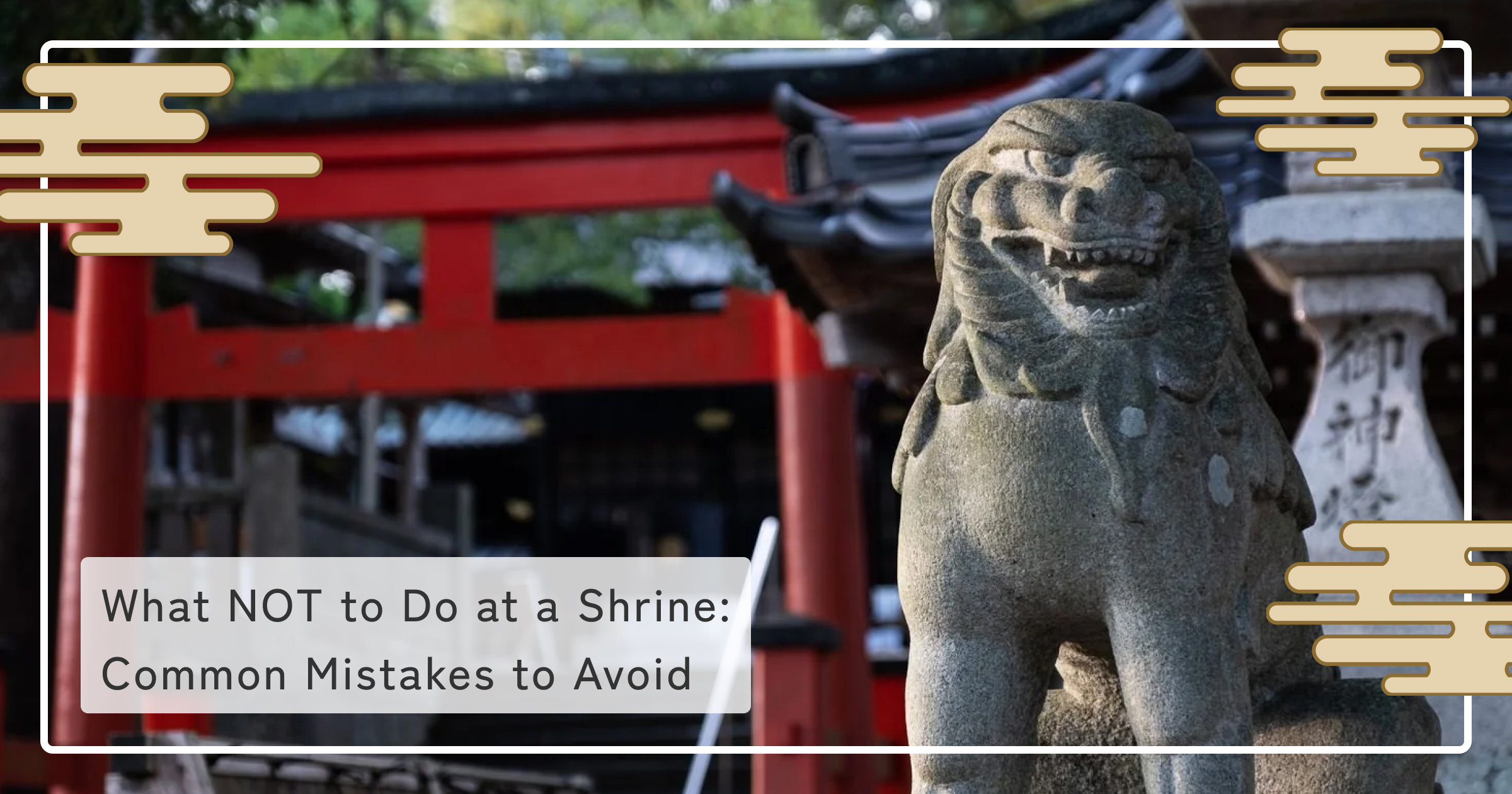
What NOT to Do at a Shrine: Common Mistakes to Avoid
– What Not to Do at a Sacred Shrine –
Shinto shrines are sacred places where deities are enshrined.
If you visit without understanding that it’s a special spiritual space, you may unknowingly act disrespectfully.
This article introduces common behaviors that are considered inappropriate at shrines.
Check the proper manners in advance and enjoy your visit respectfully.
1. Entering through the torii gate without bowing
Why it's inappropriate: The torii gate marks the entrance to the deity’s domain. A bow shows your respect as you enter sacred ground. Walking through without acknowledging it can appear rude to the gods.
2. Walking in the center of the path
Why it's inappropriate: The center of the shrine path (*sando*) is reserved for the deity. Visitors should walk quietly along the sides out of respect.
3. Ignoring the proper way to purify at the chozuya (water basin)
Why it's inappropriate: The chozuya is for purifying yourself before approaching the gods. Splashing water carelessly or putting your mouth on the dipper is unhygienic and disrespectful.
4. Throwing coins aggressively into the offering box
Why it's inappropriate: Throwing coins with loud clinks is disrespectful. Gently slide them in with care. Prayer is not about noise, but sincerity of heart.
5. Skipping or doing the prayer ritual incorrectly
Why it's inappropriate: The formal ritual is "two bows, two claps, one bow." Doing it halfway (just clapping or nodding) may come off as lacking respect. Proper form helps express genuine reverence.
6. Talking loudly or using your phone
Why it's inappropriate: Shrines are places of tranquility. Loud voices or phone use disturb others and disrupt the sacred atmosphere.
7. Eating, drinking, or smoking
Why it's inappropriate: The shrine grounds value cleanliness and respect. Eating, smoking, or drinking alcohol is usually not allowed. Even during festivals, refrain from walking while eating unless clearly permitted.
8. Taking photos in restricted areas
Why it's inappropriate: Areas like the Kaguraden (sacred dance hall) or main sanctuary often prohibit photography. Taking pictures without permission may disturb priests and other visitors.
Always read signs carefully.
9. Bringing pets into the shrine grounds (except service animals)
Why it's inappropriate: Most shrines do not allow animals due to the belief in spiritual purity (*kegare*). Please avoid bringing pets unless the shrine explicitly allows it or you're accompanied by a certified assistance dog.
10. Entering off-limits areas
Why it's inappropriate: Areas marked “Authorized Personnel Only” may be sacred preparation spaces or private quarters for priests.
Entering without permission is highly disrespectful.
Conclusion
Before making wishes or prayers, remember: a shrine is first and foremost a place to show respect to the gods.
Observing basic manners will make your visit more meaningful and respectful.
If it’s your first time, watch others and proceed carefully.
Learning the etiquette deepens your appreciation of Japanese culture.
Next time you visit a shrine, look not only at the beautiful buildings and scenery—but also at the history and beliefs behind them.